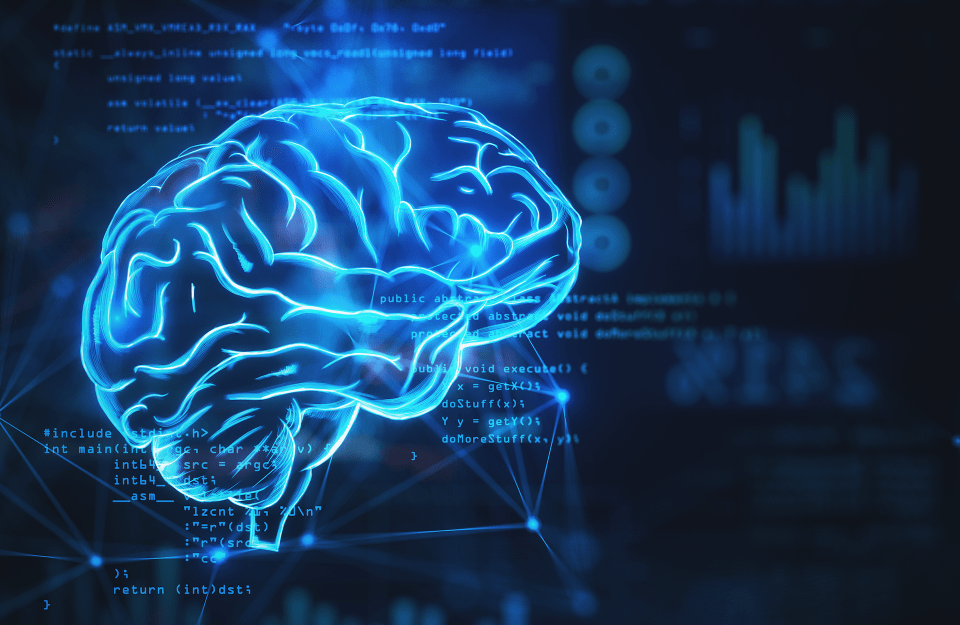Brain Signals Can Predict How Often a News Article Is Shared Online
A new study from the Communication Neuroscience Lab finds that, even across cultures, neural models can reliably predict whether an article is popular on Facebook.

For years, researchers at the Communication Neuroscience Lab at the Annenberg School for Communication and their partners have been studying why some information, like news articles or memes, get shared widely online. More specifically, they ask the question, “What goes on in people’s minds when they decide to hit that share button?”

In 2017, the lab, directed by Annenberg School Vice Dean Emily Falk, Professor of Communication, Psychology, and Marketing, was able to show that the brain activity of just 40 Americans could predict which New York Times articles would get major traction online, among millions of readers. In essence, they had discovered underlying psychological mechanisms to explain why people share, and thus how information spreads.
The lab’s newest study, published this week in the journal Proceedings of the National Academy of Sciences (PNAS), has strengthened that finding, not only replicating the results, but doing so with people from another country, and using a broader range of news categories including health and climate change. This suggests that the desire to share is based in fundamental human impulses — like presenting yourself in a positive way, seeking status, and connecting with others — which are inherently rewarding and valuable to people. It is a model the team calls the “value-based model of sharing.”
Tracing Brain Signals
The 2023 study followed a similar protocol as the previous one: Participants read headlines and summaries of online New York Times articles while undergoing functional magnetic resonance imaging (fMRI), which allowed researchers to track activity in the brain in real time. This time, however, participants from two different countries — the U.S. and the Netherlands — read and rated their willingness to share a new set of online articles from The New York Times while undergoing fMRI, and the articles covered new topics– both health and climate change. Even in these new and broader areas, the findings revealed not only that participants were more likely to share news that they felt relevant to themselves or to the people they know, but also their brain signals seem to provide clues about whether the news article is widely shared on social media.

“In doing this study,” says Annenberg alum Christin Scholz (Ph.D. ‘18), Assistant Professor in Persuasive Communication at the University of Amsterdam and leader of the Netherlands-based section of the study, “we are making sure these results are robust by looking at the brain responses of new people to new information in two different countries.”
The team decided to not only test the validity of the value-based model of sharing, but also see if they could successfully create brain-based models that could accurately predict how widely articles will be shared online.
The team found that this was the case. One model based on self-, value-, and social-related thinking (the basis of the value-based model of sharing), among other processes, successfully predicted how widely this new set of articles were shared on Facebook.
Cultural Differences
When it comes to reporting whether or not a person would share an article, there was a gap between American and Dutch responses.

“When American participants said they would share an article, that usually reflected how popular the piece of news was on Facebook,” says Hang-Yee Chan, lecturer at King’s College London, former postdoctoral fellow at the Communication Neuroscience Lab, and lead author of the current study, “but Dutch participants’ ratings were less reliable, which makes sense, perhaps because The New York Times articles are told from an American perspective.”
Interestingly, neural signals from the Dutch participants are similarly predictive compared to their American counterparts. In other words, whereas the link between what people said in surveys and the amount articles were shared online was culturally specific — the link between brain activity and large-scale outcomes was more general.
“Even if a foreign person has ostensibly different preferences in reading news here [in the Netherlands], we can still find some signals inside their brain that tell us whether a piece of information will be popular in the U.S.,” he says.
Sharing Important Messages
The study’s results, showing that brain-based prediction models can reliably predict whether an article is circulated on social media, has implications in the world outside the lab.
“Seeing how people's brains react inside the scanner gives us insight into why people ultimately share information in this day and age,” Chan says. “If we understand these signals, we might be able to use that knowledge to help important news get shared and stop misinformation from going viral.”
With this discovery in mind, the lab has been testing ways that health communicators and other people who share news with the public could better craft their messages to encourage them to be spread widely.
“As we think about pressing problems in society, ranging from health to climate change, some of the same underlying factors seem to encourage the spread of ideas,” Falk says. “These decisions matter. And there seem to be commonalities in what we value, and how we decide what is relevant. The fact that brain responses in small groups of people can predict what articles will get shared around the world is remarkable. This foundation gives us something to build on in creating new messages, and in responding to what’s out there already. The possibilities are vast.”
Funding: This research was funded in part by a Small Business Innovation Research Grant in collaboration with Charles River Analytics and CACI through the Defense Advanced Research Project Agency (DARPA) under Contract 140D0419C0093 (PI: David Koelle; subaward PI: Emily B. Falk), an NIH Director’s New Innovator Award #1DP2DA03515601 (PI: Emily B. Falk), and the DARPA Young Faculty Award YFA-D14AP00048 (Emily B. Falk). Additionally, Christin Scholz’s time was supported by a Veni grant from the Dutch Science Foundation (NWO; VI.veni.191G.034), and Rebecca E. Martin’s time was supported by a Ruth Kirschstein National Research Service Award (F32HD097873).



